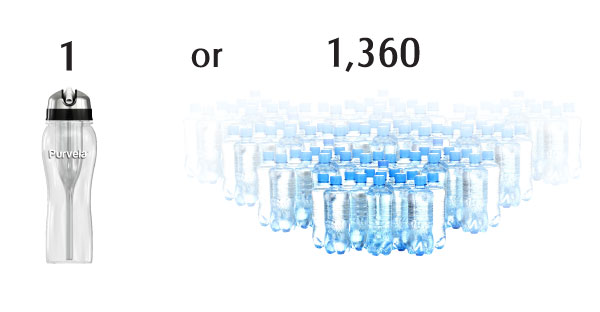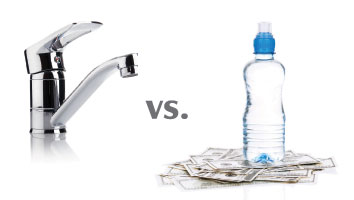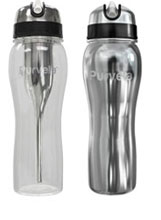The Power of pH, Purvela™, and You
A Broad Spectrum of Contaminants Removed
Radioactive Elements and By-Products Removed

Based on the recommended consumption of four 16.9-ounce water bottles per person, per day, for one year.
Based on the recommended consumption of three full Purvela™ bottles of water per person, per day, for one year (one Purvela™ plus two replacement filters).
The Recycling Myth
Only about 13% of water bottles are being recycled. 87% end up in landfills.
Just Because It’s Being Recycled, Doesn’t Mean It Stays Out of Landfills.
For every 1,000 pounds of recycled water bottles, 220 pounds wind up in landfills as recycling waste.1

| Oil Consumption Americans consume 33 billion liters of bottled water every year. This takes between 32 million and 54 million barrels of oil.2 |
 |
 |
Energy Consumption Combining all of the energy input totals, it has been estimated that producing bottled water requires as much as 2,000 times the energy cost of producing tap water.2 |
 |
The Immortality of the Plastic Bottle Plastic bottles never really go away. They just break into smaller and smaller pieces, eventually becoming tiny particles or microplastic debris that never completely degrade.3 Where will this microplastic debris eventually wind up? |

Purvela™ Personal Wellness Water System™
Removes up to 99.9% of key contaminants found in U.S. municipal tap water,
including major radioactive elements and by-products, and increases alkalinity.*
Purvela is offered in both stainless steel and Eastman Tritan™ copolyester,
BPA-free bottles.†
- http://www.napcor.com/pdf/FinalReport_LCI_Postconsumer_PETandHDPE.pdf (p 2-15)
- http://iopscience.iop.org/1748-9326/4/1/014009/pdf/1748-9326_4_1_014009.pdf
- http://oceanservice.noaa.gov/facts/degrade.html
†Eastman and Tritan are trademarks of Eastman Chemical Company.
*Results are based on manufacturer testing and specifications of the filtration technologies.
